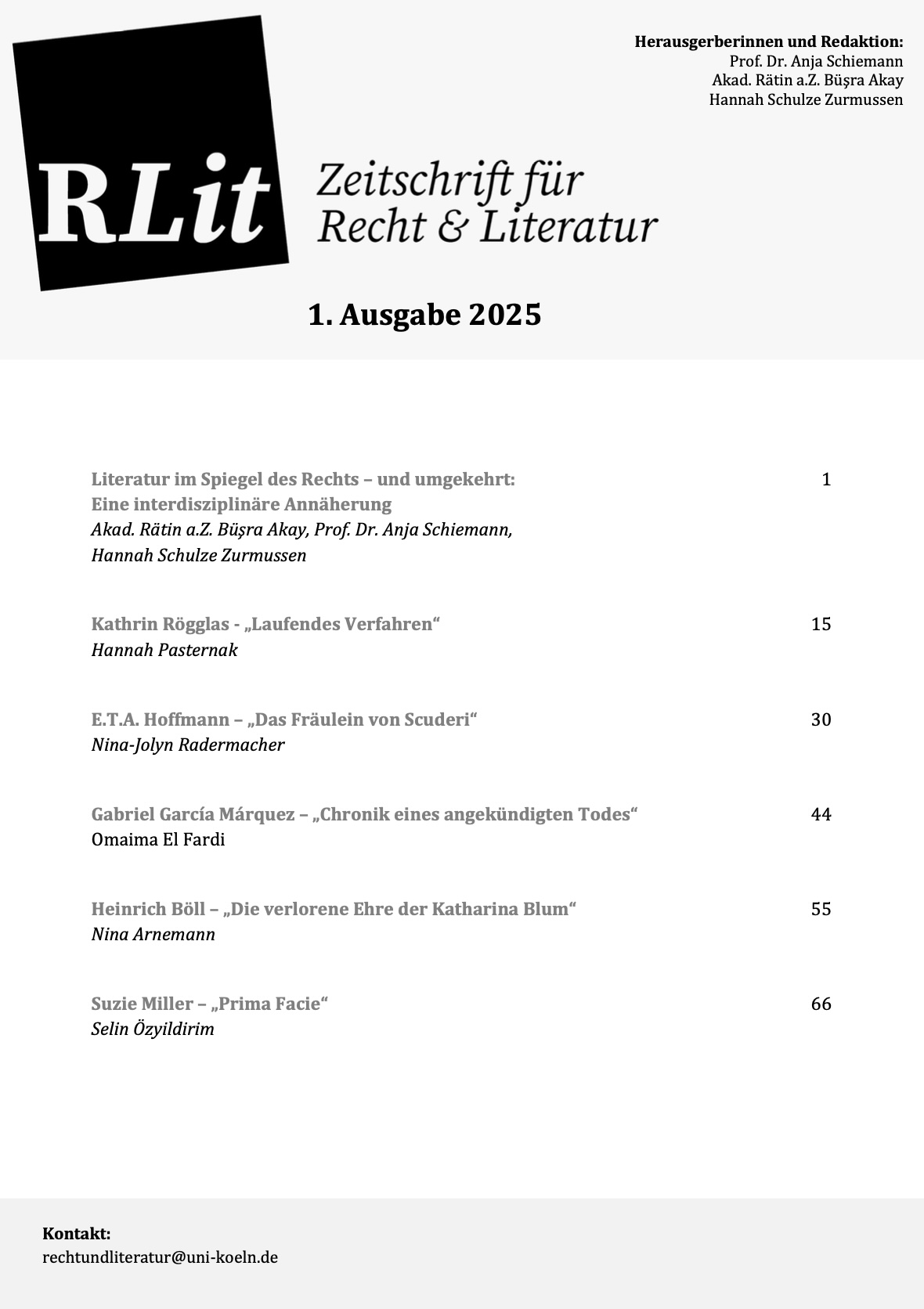Abstract
Diese Arbeit beschäftigt sich mit der Erzählung „Das Fräulein von Scuderi“, geschrieben von Ernst Theodor Amadeus Hoffmann. Dabei wird zum einen der Verlauf des Strafverfahrens im 19. Jahrhundert vorgestellt und mit den literarischen Darstellungen desselben im „Das Fräulein von Scuderi“ verglichen, wobei ein besonderes Augenmerk auf dem Umgang mit Indizien gelegt wird. Weiterhin wird beleuchtet, wie sich das Institut der Schuldunfähigkeit entwickelt hat und wie der fiktive Täter René Cardillac anhand seines Verhaltens im 21. Jahrhundert bestraft werden könnte. Dabei wird festgestellt, dass der Autor die literarischen und juristischen Elemente in seiner Erzählung nicht nur realitätsnah darstellt, sondern geschickt miteinander verwebt, sodass sie sowohl damals als auch heute Denkanstöße bezüglich der juristischen Praxis vermitteln können.
This thesis deals with the story “Das Fräulein von Scuderi” written by Ernst Theodor Amadeus Hoffmann. The focus is not on the literary aspects, but on their con- nection with legal issues and the intention behind this ap- proach. On the one hand, the course of criminal proceedings in the 19th century is presented and compared with the depictions of the same in “Das Fräulein von Scuderi“, with a particular focus on the handling of circumstantial evidence. On the other hand, it sheds light on how the institute of incapacity has developed and how the perpetrator of the book René Cardillac could be punished in the 21st century on the basis of his behavior. It is noted that the author not only presents the literary and legal elements in his story realistically, but also skillfully interweaves them so that they can provide food for thought regarding legal practice both then and now.

Dieses Werk steht unter der Lizenz Creative Commons Namensnennung 4.0 International.
Copyright (c) 2025 Recht und Literatur

